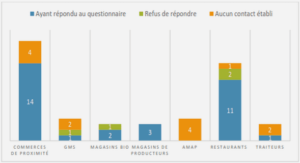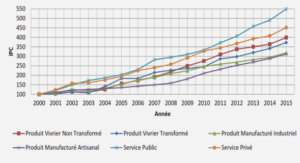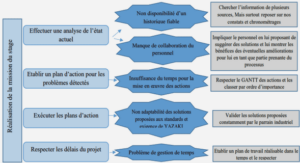Standards and documented codes
There is no known standard currently in use that provides step-by-step instructions to design packed stuffing boxes and select a suitable packing type for a certain application. Also, documented standard test procedures related to the qualification of packed stuffing-boxes are only recent. API 622 and ISO 15848 are two recent standards that are undergoing major revisions. Due to the strict legislation on fugitive emissions and the new environmental protection laws, several standard design codes introduce new criteria based on leakage rate while valve systems lack a design methodology. Fugitive emission requirements are one of the critical regulations that the chemical and petrochemical industries have to comply with. The motivation to develop new standards is ever increasing to maintain a clean environment. In North America, manufacturers have a great concern about qualification and certification of their valve products and, in particular, their compliance with the EPA strict regulations about fugitive emissions. In fact, there is a need to develop new standards related to the design and testing of valve stem packing because these components are the main source of fugitive emissions of pressurized equipment (FSA, Sealing Sense (2012)). Some important standards and in-house test procedures related to valve fugitive emissions developed after the 90’s are ISO-15848-1 and -2, API-622, API-624, ANSI/ISA S93.00.01, ANSI/FCI 91-1, TA-Luft VDI 2440, SHELL MESC SPE 77/300, SHELL MESC SPE 77/312, Chevron SSM-PU-53.02-A and EXXONMOBIL GP 03-12-09. The ISO-15848 standard for valve fugitive emissions has been issued by International Standards Organization (ISO) in two parts using a wide range of information from different industries (FSA, Sealing Sense (2012)). The first part, ISO-15848-1 (ISO 15848-1 (2006)), imposes helium or methane as a test media and a sample of a test rig that performs such a test is shown in Figure1.1 (c). The test leak detection method used is the one referred as EPA1 method 21 for leak measurements of the completely assembled valves to address a classification system and qualification procedure. The range of temperature is between -1960C to 4000C (-320.8F to 752F), and the criteria for the leakage failure is a predetermined parameter specified by the customer.
The second part of ISO standards for valve fugitive emissions, ISO-15848-2 (ISO 15848-2 (2003)), is a quality control test or a production acceptance test of valves. This part ensures the production quality of the valves tested in part one and defines a quality control test method to be followed systematically in the manufacturer’s site. The recommended testing fluid is helium, and the test should be conducted at a pressure of 6 bars and is supposed to run at room temperature. Also, this document should indicate the percentage of the total produced valves for inspection. Presently both parts of this standard are under revision. The American Petroleum Industries (API) issued two standards for valve fugitive emissions. The first one is API-622 (API-622 (2011)), the second edition of which has been published in 2011. In addition to the use a specific test rig for fugitive emission testing of valve packings described in the first edition, it is now permitted to test an assembled valve system instead. The test bench shown in Figure 1.1(a) uses methane as the testing fluid and the procedure imposes five thermal cycles from ambient temperature to 260oC (500F) and 1510 mechanical cycles representing the opening and closing of the valve. Also, this standard considers corrosion of the packing material and defines a criterion of 15 percent oxidation in 24 hours as per the procedure of FSA2-G-604-07, method B. Furthermore this standard limits leakage failure to 500 particles per millions (ppm) as imposed by the EPA. The second API standard for valve fugitive emissions is API-624 (API-624 (2011)) which is devoted to rotating and rising-rotating stem valves (test bench in Figure 1.1(b)). This document defines the required test procedure and imposes methane as testing fluid while referring to EPA method 21 for leak measurements and setting the limit to 100 ppm. The allowed temperature range is -29 oC to 538 oC (-20F to 1000F). The test procedure requires 310 mechanical cycles and three thermal cycles. Similar to ISO-15848-1, the sealing materials must be photographed after valve system disassembly to record any surface changes that can affect the sealing performance.
Numerical simulations
Computer simulation is a powerful tool in engineering that helps in the analysis of complex structures subjected to any loading condition. Using such tools in engineering processes does have several benefits and drawbacks. In particular, it allows for the analysis of complex and large scale models at low cost when compared to experimental studies. In addition, it allows for the solving of complex problems that are sometimes very difficult or impossible to treat analytically. Figure 1.9 Annular section of a packing ring (Lassaeux et al., 2011) However, the ability of commercial software to include all material behaviors is limited, and packing materials happen to fall into this category, therefore, users are cautioned to validate and verify their results. The packed stuffing box valve configuration has an axis of symmetry which facilitates its simulation. The main obstacle in the numerical simulation of stuffing-box packing is the material modeling of the packing rings and the interaction between the packing ring and the side walls. Several researchers have already proposed different techniques to simulate the housing, stem, gland and packing interactions numerically. Cartraud and Wielcosz (1996) proposed a model for elastoplastic seal material, including nonlinearity. Zerres et al. (1998) compared the mechanical behavior of bolted joints obtained through both FEM analysis and the approach proposed by the European code EN-1591. They reviewed the models using the simplifications introduced by the European code EN (Zerres et al., 1998). Baogang et al. (1999) conducted a 3D FE model analysis by considering the nonlinearity in the behavior of the gasket. They compared the results of an analysis of several joints with a variety of flange thicknesses, thus showing that the performance of a flange joint sealing is affected by the non-linearity of the stress-strain curve of the gasket.
Sawa et al. (2002) used an elastoplastic model that considered the hysteresis effect and the nonlinear behavior of a spiral wound gasket to study the effect of the nominal diameter of flanges on the distribution of contact stress. They found that the variation in the distribution of the contact stress of bolted joints with large diameters is greater than for those with smaller diameters. This phenomenon can be explained by the difference in the number of bolts and the rotational flexibility of the flange. Thus, when internal pressure is applied to the assembly, they found a reduction in actual sealing surface. Diany and Bouzid (2006) numerically simulated the mechanical interaction of packed stuffing boxes using ANSYS software. The model is an axisymmetric configuration with four-node plane elements used to model the housing and stem, and 2D four-node hyperelastic elements to model the packing rings. They used experimental data to describe the nonlinear behavior of packing material during the loading phase. However, the load loss pressure and temperature was not investigated in this study. In another paper, Diany and Bouzid (2009(a)) exploited a numerical simulation for stuffingboxes to evaluate their proposed analytical model. The axisymmetric finite element model, illustrated in Figure 1.10, was used to study the effect of applied axial stress on the axial distribution of lateral contact pressure between packing and side walls as a function of the friction coefficient. The packing material was modeled using the Mooney-Rivlin material behavior with the two constants, C1 and C2, determined experimentally by curve fitting. The investigated parameters were the number of packing rings (2 to 8), gland pressure (10 to 50 MPa), and friction coefficient (0.15 to 0.25).
|
Table des matières
INTRODUCTION
CHAPITRE 1LITERATURE REVIEW
1.1Introduction
1.2Standards and documented codes
1.3Analytical studies
1.4Numerical simulations
1.5Experimental investigations
1.6Conclusion
1.7Research project objectives
CHAPITRE 2EXPERIMENTAL SET-UP
2.1Introduction
2.2Packed stuffing box test rig
2.2.1Packed stuffing box assembly at room Temperature
2.2.2Packed stuffing box assembly at high temperature
2.2.3Pressurization system
2.2.4Hydraulic system
2.2.5Leak detection methods
2.3Instrumentation and control
1.1Data acquisition and control system
2.4Test procedure
CHAPITRE 3STRESSES ANALYSIS OF PACKED STUFFING-BOXES
3.1Abstract
3.2Introduction
3.3Analytical analysis
3.3.1Packing ring contact analysis
3.3.2Analysis of the housing
3.3.3Ring analysis
3.3.4Compatibility of displacement and rotation at the junctions
3.4Numerical simulation
3.5Experimental investigation
3.6Results and discussion
3.7Conclusion
CHAPITRE 4EVALUATION OF LEAKAGE THROUGH GRAPHITE BASED COMPRESSION PACKING RINGS
4.1Abstract
4.2Introduction and background
4.3Physical model
4.4Experimental setup
4.5Correlation and results
4.5.1Intrinsic Permeability
4.5.2Diffusivity parameter
4.6Leak predictions
4.7Conclusion
CHAPITRE 5LEAK PREDICTION METHODS THROUGH POROUS COMPRESSED PACKING RINGS: A COMPARISON STUDY
5.1Abstract
5.2Introduction
5.3Physical model
5.3.1Capillary model
5.3.2Concentric cylinders model
5.3.3Modified Darcy model
5.4Experimental set up
5.5Exploitation of constitutive parameters
5.5.1Porosity parameters of the capillary model
5.5.2Porosity parameters of the concentric cylinder model
5.5.3Parameters of the modified Darcy’s model
5.6Leak rate prédiction
5.7Conclusion
CHAPITRE 6EFFECT OF TAPERED HOUSING ON THE AXIAL STRESS DISTRIBUTION IN A STUFFING-BOX PACKING
6.1Abstract
6.2Introduction
6.3Theoretical background
6.4Analytical modeling
6.5FEM simulation
6.6Results and discussion .
CHAPITRE 7CHARACTERIZATION AND MODELLING OF TIME-DEPENDENT BEHAVIOUR OF BRAIDED PACKING RINGS
7.1Abstract
7.2Introduction
7.3Backgraound
7.4Physical Model
7.5Experimental Set-up
7.6Results and discussion
7.7Conclusion
CONCLUSION AND RECOMMENDATIONS
APPENDIX A
BIBLIOGRAPHY
![]() Télécharger le rapport complet
Télécharger le rapport complet




